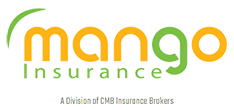Category: Food Services and Drinking Places
NAICS CANADA CODE: 722410 Drinking Places (Alcoholic Beverages)
Description of Operations:
Bars serve alcoholic beverages by the bottle, glass or pitcher which are consumed on the premises. Many offer incidental food items, such as snacks or sandwiches, but the predominant operation is the sale of alcoholic beverages. Other exposures may include music, live entertainment, various promotions, and contests. Some may have small dance floors.
Property exposures are from any cooking operations conducted on the premises. Cooking will likely be limited to microwave and toaster ovens. If there are grills and deep fat fryers, these must have automatic fire extinguishing protection, hoods and filters. The kitchen must be kept clean and grease free to prevent fire spread. Alcoholic beverages are susceptible to damage from heat and smoke. A small fire can become a total loss if stock is condemned due to potential contamination. Where legally permitted, most bars continue to permit customer and employee smoking. The proper disposal of cigarette butts as part of the closing procedure is vital to prevent fire from smouldering ashes or butts. Theft is a major concern in bars and taverns due to the attractive nature of alcoholic beverages. Liquor should be stored in areas inaccessible to customers. If food is served, spoilage can result from power outages.
Business income with extended time period coverage should be purchased by any bar owner. While clientele tends to be fairly loyal, they will switch after a major loss due to the lag time between the re-opening and the return to full operations.
Equipment breakdown exposures can be high if operations are dependent on refrigeration equipment.
Crime exposures are from employee dishonesty and money and securities due to the high amounts of cash, alcohol and tobacco products. Criminal background checks should be conducted on any employee handling money. Employee dishonesty normally centres on the stock rather than the money. Lottery ticket sales or other gambling devices present another major temptation to employees. Because bars tend to have significant cash sales, cash drawers should be regularly stripped and moved to a safe away from the front of the store. Irregular drops during busy evenings are helpful in preventing a large buildup of cash. Closing time is the most vulnerable time so security procedures should be in place to prevent hold ups.
Inland marine exposures include computers and valuable papers and records.
Occupiers’ Liability exposures are high due to public access to the premises and the serving of alcoholic beverages, which can impair motor abilities and increase the likelihood of trips, slips or falls. Spilled drinks should be cleaned up promptly. Floor coverings must be in good condition with no frayed or worn spots on carpet and no cracks or holes in flooring. Dance floors must be clean and free of debris. Because lighting is normally subdued, any change of elevation must be carefully marked. All fire exits should be plainly visible from any part of the premises, and kept unlocked from the inside during business hours. Chairs, particularly bar stools, should be regularly checked for cracks and fatigue. Guests must not be permitted to climb on top of chairs, stools, bars, or tables. Parking lots and sidewalks need to be in good repair, with snow and ice removed, and generally level and free of exposure to slip and falls. Outdoor security and lighting must be consistent with the area. Customers may carry weapons onto the premises. Employees should be trained in dealing with unruly or impaired customers to prevent violence. Personal injury exposures include bouncers escorting a patron out of the premises. Any bouncer activity should be documented and witnessed in case of future lawsuits.
Liquor liability exposure depends on the amount and type of alcohol served and the adherence to strict policies on who can be served and how much they can be served. Failure to comply with provincial and federal regulations can result in the loss of a liquor permit which will close the business. There must be a set procedure to check ages of all who enter the establishment. All employees who serve liquor to customers must be trained in recognizing signs of intoxication. A procedure should be in place to deny serving intoxicated patrons. Programs that encourage designated drivers or offer free taxi service can be useful.
Automobile exposure is generally limited to hired or Non-owned from employees using their vehicles to run errands.
Workers compensation exposures come from slips, falls, cuts, burns and heavy and awkward lifting, along with interactions with rowdy customers. The employees in many bars tend to be minimum wage and turnover may be high. Well-trained employees with an incentive to do their best and who have clear direction will have the fewest injuries. Company incentives to encourage long-term employment are positive signs of management control. As with all retail businesses, hold-ups are possible so employees should be trained to respond in a prescribed manner.
Minimum recommended insurance coverage for Bars:
Business Personal Property, Business Income and Extra Expense, Employee Dishonesty, Money and Securities, Valuable Papers and Records, General Liability, Liquor Liability, Employee Benefits, Umbrella, Hired and Non-owned Auto, Workers Compensation.
Other Insurance coverages to consider for Bars:
Building, Spoilage, Computers, Cyberliability, Employment-related Practises, Environmental Impairment, Stop Gap Liability

